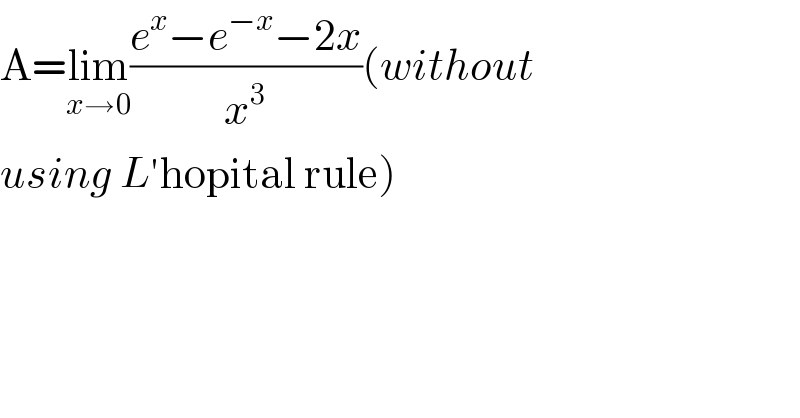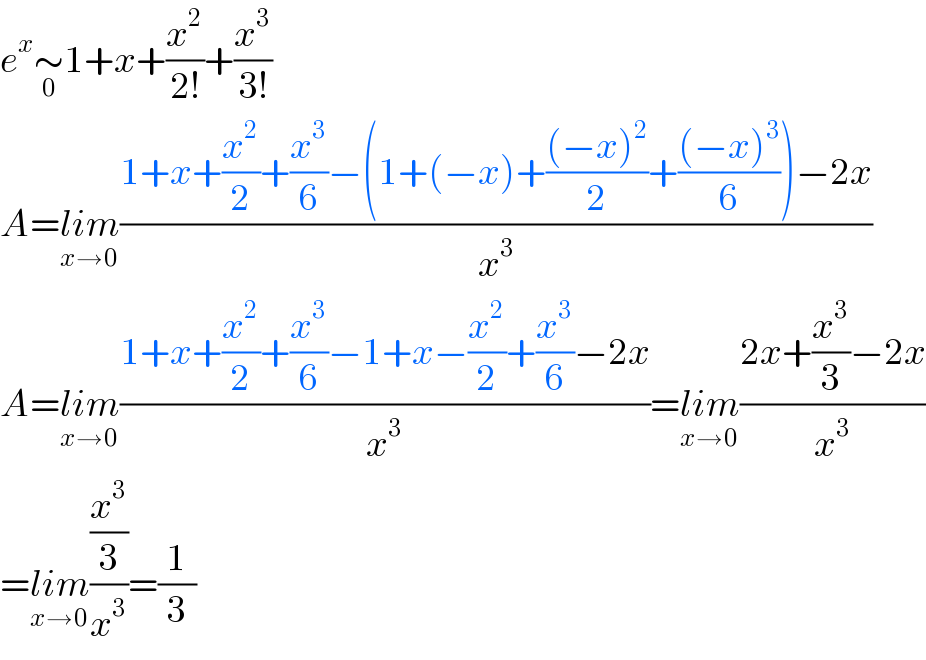
Question and Answers Forum
Question Number 51617 by Saorey last updated on 29/Dec/18

Commented by aseerimad last updated on 29/Dec/18
how to do it by L'hopital ?
Commented by tanmay.chaudhury50@gmail.com last updated on 29/Dec/18

Answered by Smail last updated on 29/Dec/18

